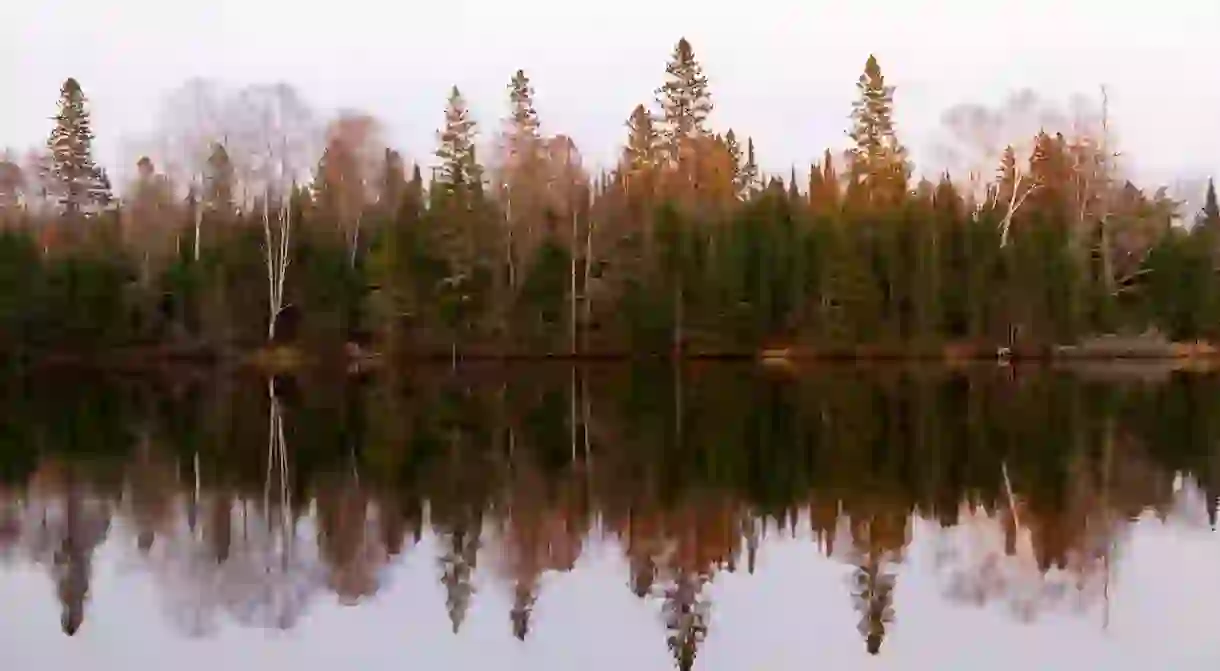Hiking The Ice Age Trail In Wisconsin

Nearly 15,000 years ago, much of North America was buried under a large sheet of ice; as the ice retreated at the end of the last Ice Age, glacial landforms – such as ridges, boulders, river valleys, rolling hills, and massive lakes – were left behind as evidence of an era passed. The Ice Age National Scenic Trail, built in 1980, is a 1,200-mile-long path that traces the edge of the former glacier from St. Croix Falls to Potawatomi State Park, highlighting remarkable natural features sculpted into the Wisconsin landscape. For those hitting the trail, discover our guide to one of the best long distance hiking trails: The Ice Age Trail.
Important Info
The Ice Age Trail, an idea that arose in the 1950s by the founder of the Ice Age Trail Alliance, Ray Zillmer, provides an unparalleled look into how glaciation has sculpted our planet over thousands of years. Traveling through one of the most beautiful areas in the state, Zillmer hoped the trail would provide access to these glacial forms; in 1980, his dream was made a reality. Today, the trail is maintained by the Ice Age Trail Alliance and a number of volunteers, with over one million visitors every year. Still under construction, it boasts over 600 miles of footpaths (marked by yellow blazes) and another 500 miles of unmarked routes connecting the blazed segments. An ideal off-road hiking trail fit for outdoor enthusiasts, the Ice Age Trail was also designed to connect hikers with Wisconsin communities, with sections of the trail meandering through local towns.

Along the route, novices will experience grandiose parks, forests, and abundant wildlife; the trail, however, passes through portions of privately owned land, and hikers are expected to respect these properties – the Ice Age Trail would not exist without landowners’ cooperation. The Ice Age Trail, open year-round, offers opportunities to enjoy the beauty of Wisconsin by thru-hiking, section hiking, or single-day hikes; there are a number of recommended hikes, but whether you’re an experienced mountaineer or first-timer, always prepare before embarking on your trip. If you’re planning on backpacking, travelers can camp in designated sites, head to a local campground, or book a stay at an inn; there are also primitive and dispersed camping areas (no permit or fee required), but there are restrictions on where hikers can set up camp. Be sure to always carry a guidebook, compass, map, first aid kit, water, communication device, flashlight, and matches; prepare for varying weather and trail conditions; bring rain gear and proper footwear; and always follow the Leave No Trace policy.

What To See
The Ice Age Trail plays host to a number of natural wonders, including Baraboo Hills and Devil’s Lake; for the best views of glacial topography, head to the Ice Age National Scientific Reserve – filled with kettles, potholes, and glacial erratics. The Ice Age Trail is also home to abundant wildlife, with roaming mammals like wolves, bears, fox, deer, and porcupine amongst a large population of birds, including woodpeckers and bald eagles. Other must-sees include Two Creeks Buried Forest, Kettle Moraine, Interstate State Park, Chippewa Moraine, Point Beach State Forest, Chequamegon-Nicolet National Forest, Gibraltar Rock, Jerry Lake, and Cross Plains – at Kettle Moraine State Forest, Interstate State Park, and Chippewa Moraine State Recreation Area, visitors can delve into the history and geology of Wisconsin. With its proximity to nature, the Ice Age Trail also provides access to outdoorsy activities including snowshoeing, fishing (license required), hunting, cross-country skiing, and biking (certain segments).
















